Key takeaways
- Louisiana’s government structure emphasizes local governance, allowing school boards to directly influence educational policies based on community needs.
- Community collaboration is essential in shaping effective educational policies, fostering strong relationships and mutual respect among stakeholders.
- Engagement with local government involves attending meetings, networking, and organizing forums to gather community input, promoting meaningful dialogue.
- Key lessons from collaboration include the importance of open communication, patience in building relationships, and flexibility in adapting to challenges for innovative solutions.
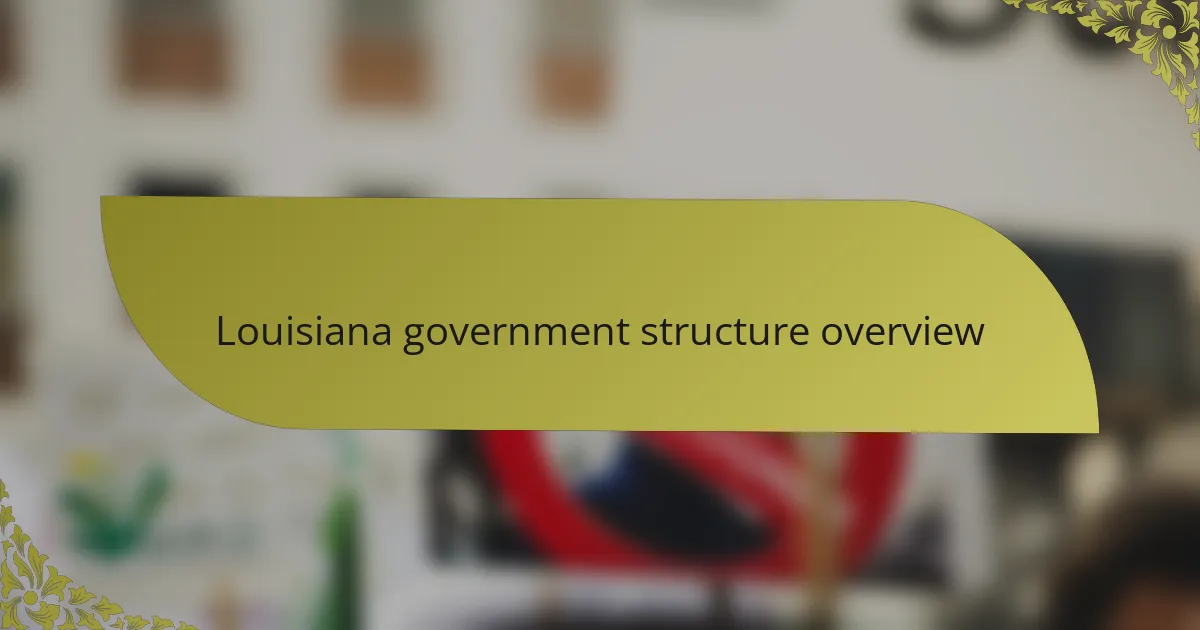
Louisiana government structure overview
Louisiana’s government structure is unique, blending elements of state and local governance. What stands out to me is the active role of local boards, like the Jefferson Parish School Board, which directly shapes educational policies. In my experience, understanding this structure was crucial in navigating the collaborative process with the board, as each member has a significant impact on initiatives in their jurisdictions.
During my interactions, I often found it inspiring to see how local governance directly caters to community needs. Each layer—state, parish, and individual school boards—works together yet operates independently, which can feel overwhelming at times but ultimately allows for tailored educational solutions. This approach truly reflects the spirit of community-driven governance.
- Louisiana’s government is divided into three branches: executive, legislative, and judicial.
- Local governments have substantial authority, including school boards that manage education and policy decisions.
- Parishes serve as administrative divisions, allowing for more localized governance.
- Collaboration between state and local entities can lead to innovative solutions, especially in education and infrastructure.
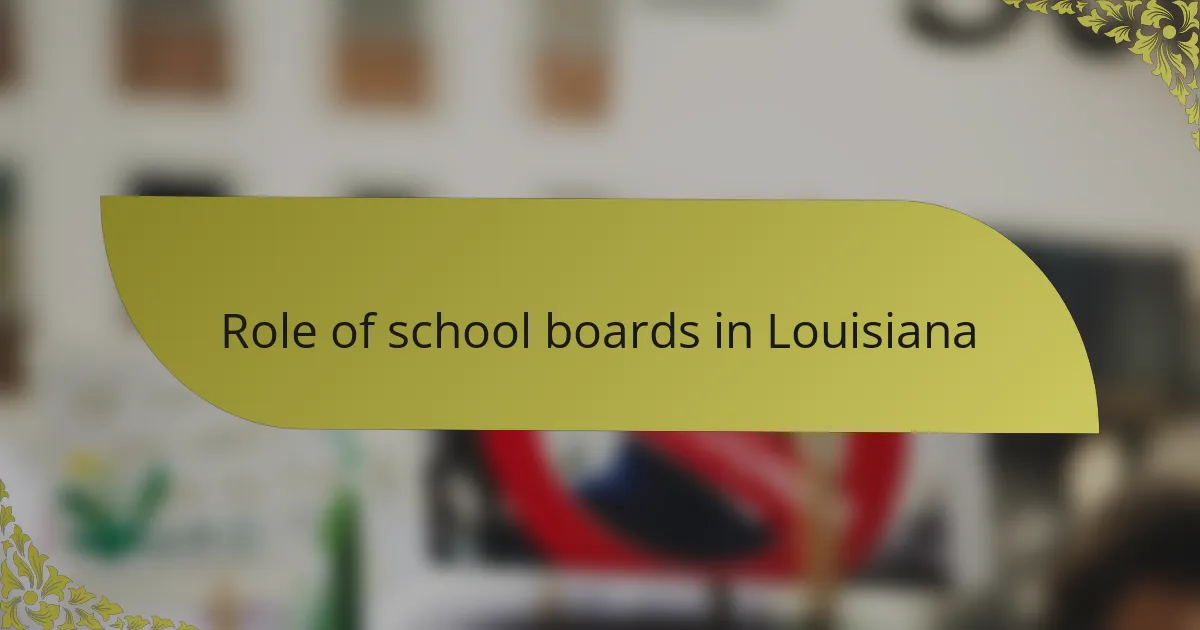
Role of school boards in Louisiana
School boards in Louisiana, like the Jefferson Parish School Board, play a pivotal role in the educational landscape. They are not just administrative bodies; they are empowered to make decisions that affect students’ daily lives. I remember a time when a board member shared how local input directly influenced new curriculum choices, and it struck me how invaluable a responsive board can be for the community.
These boards oversee funding, policy implementation, and even facility management, which means they hold a significant responsibility. When I collaborated with the Jefferson Parish School Board, I was often amazed by the breadth of their authority and how decisions made at that level could lead to immediate changes for students. Have you ever thought about how localized governance can solve puzzles that a one-size-fits-all state policy simply can’t?
The ability of school boards to adapt and respond to the specific needs of their communities is something I deeply value. It fosters a sense of ownership and engagement among residents that you rarely find in larger government structures. Each meeting I attended felt like a heartbeat of the community, showcasing how committed these boards are to ensuring every child has access to quality education.
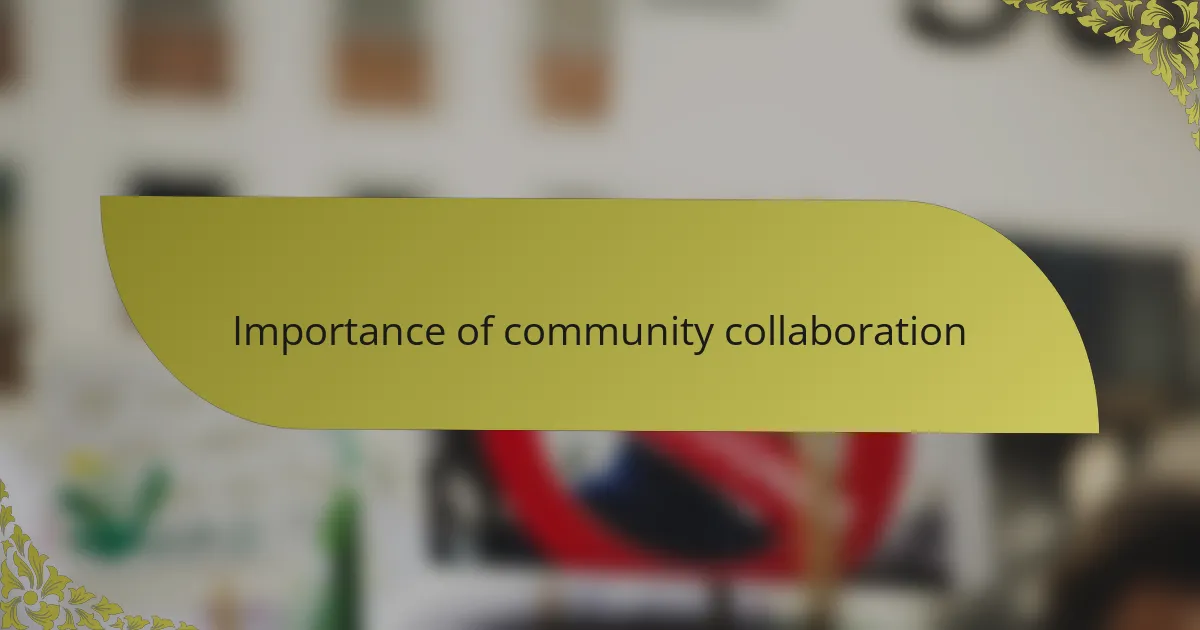
Importance of community collaboration
Community collaboration is vital in shaping effective educational policies. In my experiences with the Jefferson Parish School Board, I saw firsthand how joining forces with local stakeholders can lead to meaningful change. For instance, when we collectively addressed concerns about school funding, the passion and commitment of community members truly sparked a dialogue that resulted in concrete solutions.
Working together creates an environment where everyone’s voice matters, fostering mutual respect and understanding. I recall a workshop where parents, educators, and board members shared stories of their experiences. Those emotional exchanges helped us craft policies that reflected our community’s needs rather than top-down decisions that often miss the mark.
Here’s a comparison table reflecting my observations on collaboration versus traditional approaches:
| Collaboration | Traditional Approach |
|---|---|
| Inclusive decision-making | Top-down decisions |
| Shared responsibility | Single leadership accountability |
| Community engagement | Limited stakeholder involvement |
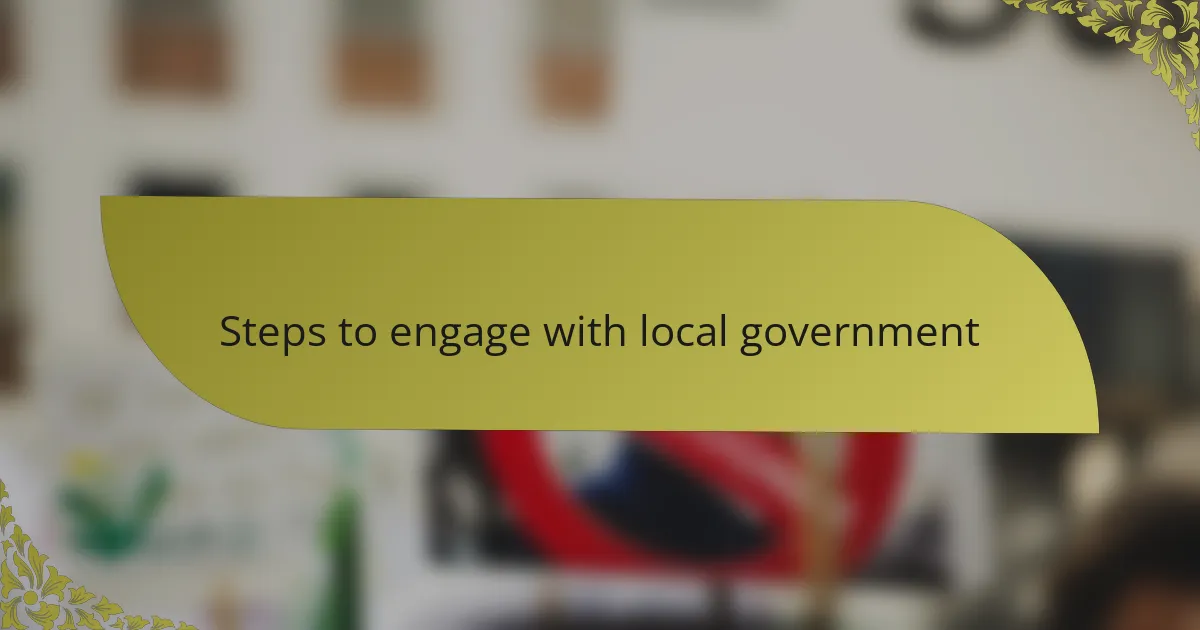
Steps to engage with local government
Engaging with local government can be a rewarding experience, often allowing for deeper connections within the community. When I first approached the Jefferson Parish School Board, I felt a mix of excitement and nervousness. I wasn’t just advocating for change; I was trying to represent the voices of parents and students who often felt unheard.
To effectively engage with local government, consider these steps:
- Attend public meetings to understand their processes and priorities.
- Network with board members after sessions to build rapport and express your concerns.
- Organize community forums to gather feedback and highlight collective needs.
- Prepare a clear agenda or proposal prior to meetings, showcasing your ideas effectively.
- Follow up after meetings to show persistence and commitment to the issues discussed.
These steps can help foster a meaningful dialogue and ultimately create positive change in your community.
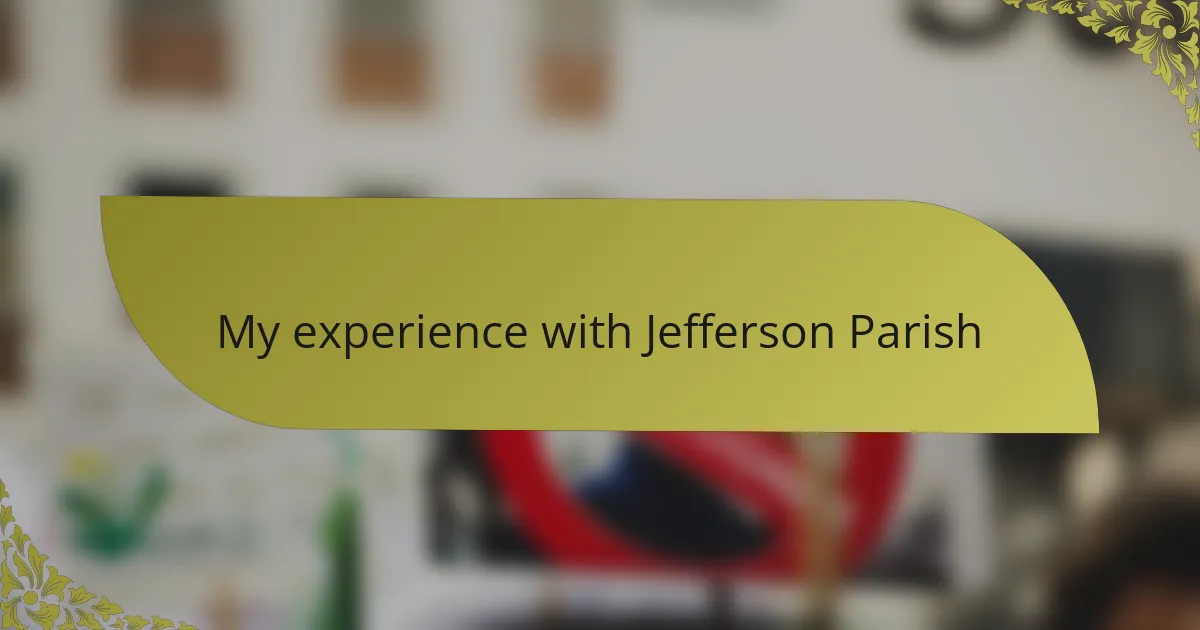
My experience with Jefferson Parish
My time working with the Jefferson Parish School Board was truly enlightening. Collaborating with educators and administrators, I witnessed their dedication to enhancing student experiences firsthand. One particular meeting stands out; there was a palpable sense of commitment as everyone discussed innovative ways to improve after-school programs.
These experiences yielded several key insights:
- Open Communication: I learned the importance of fostering dialogue between community members and educators to ensure everyone’s voices were heard.
- Shared Goals: Aligning on common objectives helped us focus our efforts effectively and energize the entire team.
- Flexibility and Adaptability: The ability to pivot and adapt plans based on feedback proved crucial in addressing the ever-evolving needs of students.
Overall, these elements made my collaboration not just productive but also deeply rewarding.
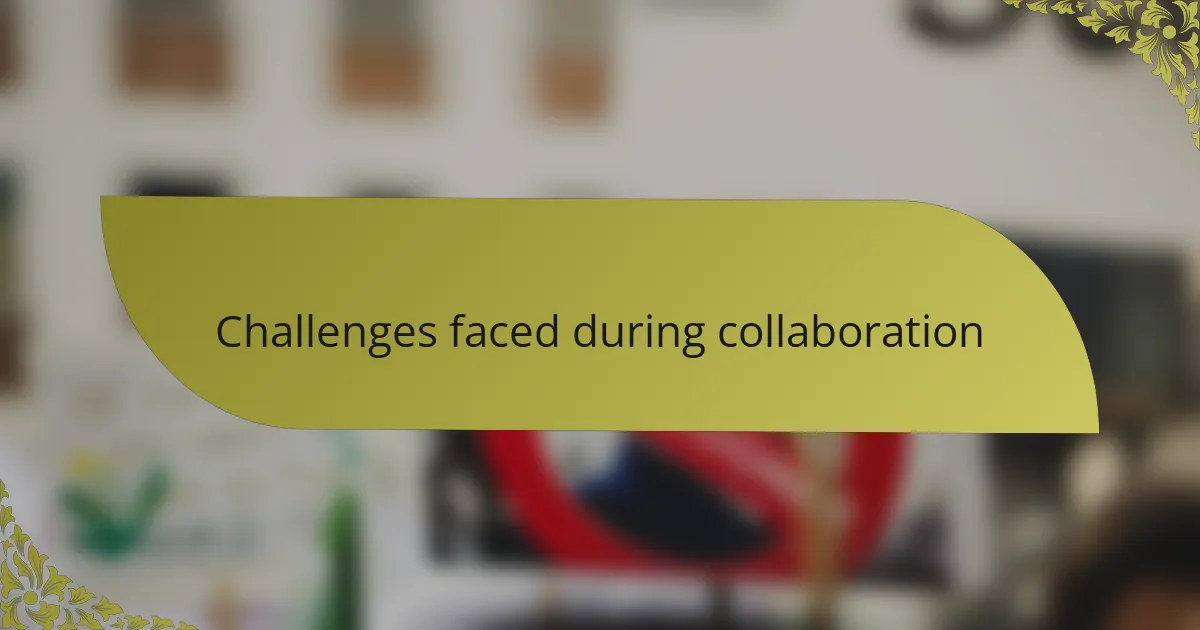
Challenges faced during collaboration
During my collaboration with the Jefferson Parish School Board, several challenges emerged that tested our commitment and resilience. Communication was often a hurdle; sometimes, the complexities of policies and procedures created misunderstandings. For instance, during one meeting, I felt the frustration when my ideas weren’t fully grasped; it reminded me of times in my career when clarity was crucial.
Additionally, aligning our goals and expectations presented its own set of difficulties. I vividly recall a planning session where differing perspectives on educational priorities led to heated discussions. It really made me appreciate the importance of compromise and understanding different viewpoints.
Finally, navigating the bureaucratic landscape was another layer of challenge. When we tried to implement new initiatives, the red tape often slowed progress, which was disheartening at times. However, these experiences ultimately strengthened our collaboration, as they pushed us to innovate and find creative solutions.
| Challenge | Description |
|---|---|
| Communication Issues | Misunderstandings due to complex policies. |
| Goal Alignment | Differing perspectives on educational priorities. |
| Bureaucratic Delays | Red tape slowing down initiative implementation. |
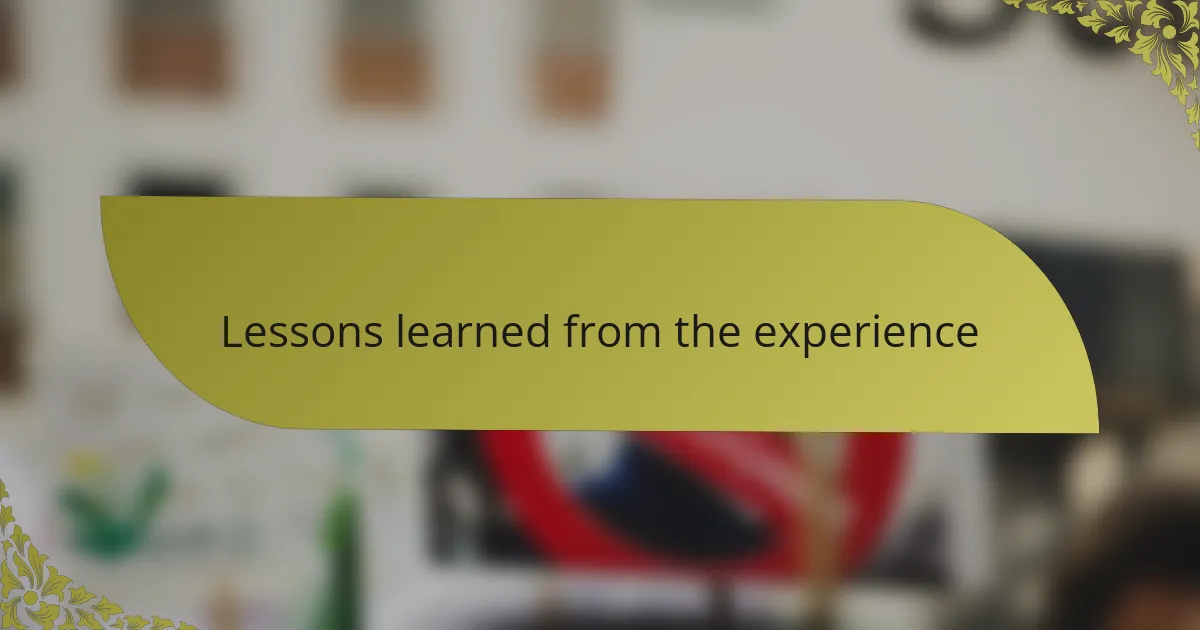
Lessons learned from the experience
Collaborating with the Jefferson Parish School Board was a transformative experience for me. One of the biggest lessons I learned was the importance of open communication. Establishing a dialogue made it possible for us to identify shared goals, which significantly improved our collaborative efforts. I remember attending a meeting where initial misunderstandings were cleared up simply by encouraging everyone to voice their thoughts.
Another key lesson was the power of patience. Change doesn’t happen overnight, and I noticed the need to nurture relationships over time. In one instance, after several discussions about resource allocation, we finally reached a consensus that not only benefited the schools but enabled a strong sense of community among stakeholders.
Lastly, I realized that flexibility is crucial. During the project, plans often shifted, and adapting to unexpected challenges fostered innovation and creativity. I recall a moment of frustration that turned into an opportunity when it pushed us to think outside the box and devise a better solution for the students.
| Lesson | Insight |
|---|---|
| Open Communication | Encouraged dialogue leads to shared goals. |
| Patience | Building relationships takes time but pays off. |
| Flexibility | Adapting to challenges fosters creativity. |